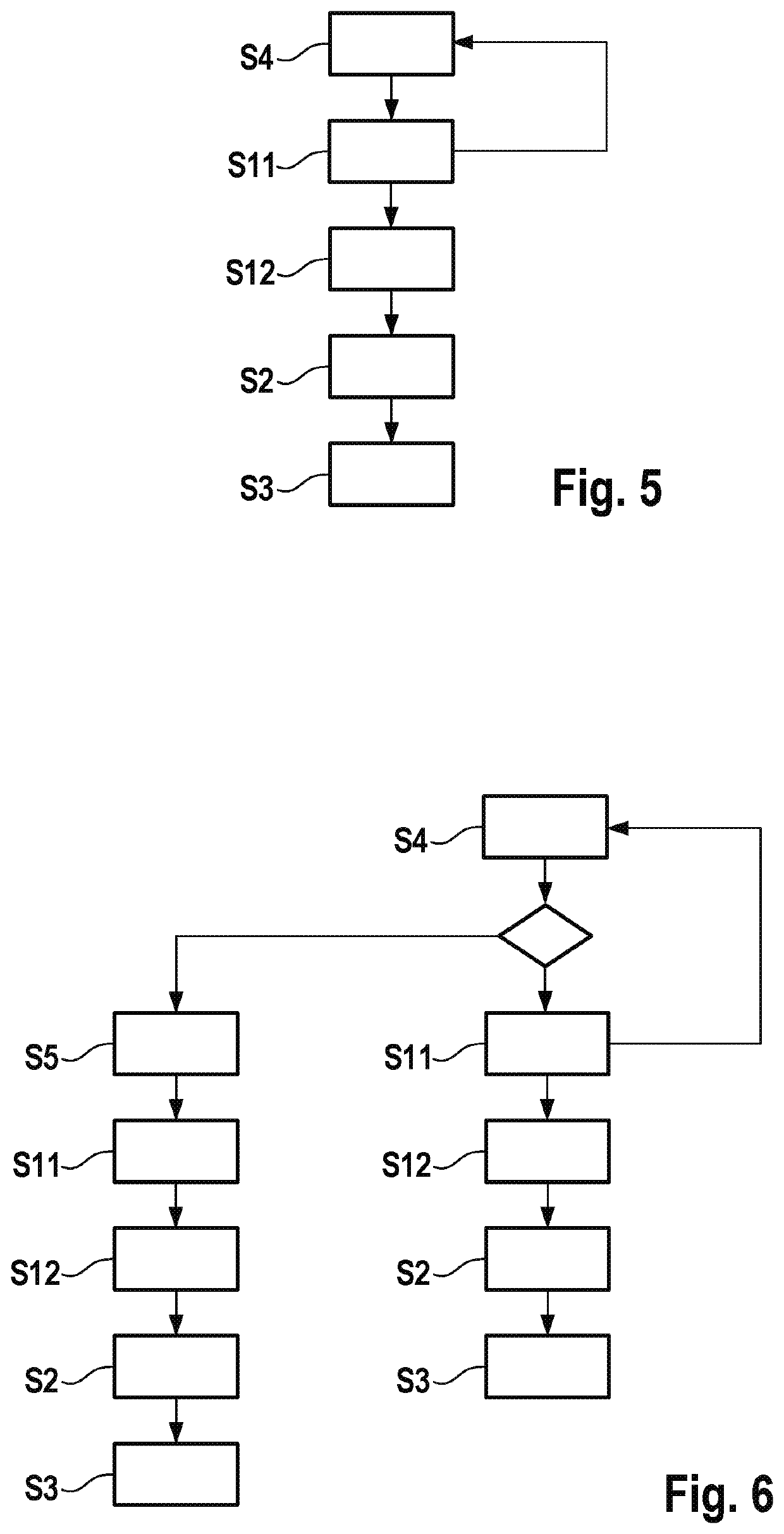Method and device for the detection of corrosion within an at least partially electrically conductive housing of an electric energy storage unit and corresponding electric energy storage system
a technology of electrical energy storage unit and at least partially electrically conductive housing, which is applied in the direction of safety/protection circuits, instruments, batteries, etc., can solve the problems of corrosion from the inside leakage of the battery cell, and easy electrochemical reaction of the metal housing, so as to speed up the detection of corrosion and avoid unnecessary checks of the electric energy storage unit
- Summary
- Abstract
- Description
- Claims
- Application Information
AI Technical Summary
Benefits of technology
Problems solved by technology
Method used
Image
Examples
first embodiment
[0024]FIG. 4 shows a flow diagram of the method according to the invention.
second embodiment
[0025]FIG. 5 shows a flow diagram of the method according to the invention.
third embodiment
[0026]FIG. 6 shows a flow diagram of the method according to the invention.
DETAILED DESCRIPTION
[0027]Identical reference signs refer to identical features in all figures.
[0028]FIG. 1 shows an electric energy storage unit 100, which has a positive terminal 102 and a negative terminal 103. The electric energy storage unit 100, which in this embodiment is a battery cell, 100 further comprises a metallic housing 104. A resistance element 101 with a preassigned electrical resistance value is installed between the positive terminal 102 and the metallic housing 104 which electrically connects the metallic housing 104 and the positive terminal 102. In this embodiment, an explicit electrical component, for example a resistor with a preassigned electrical resistance value, is used. However, the resistance element 101 may also be embodied by a well-designed interface between the housing 104 and electrochemically active parts, like the jellyroll, of the battery cell. Well-designed in this conte...
PUM
| Property | Measurement | Unit |
|---|---|---|
| time | aaaaa | aaaaa |
| instant of time | aaaaa | aaaaa |
| currents | aaaaa | aaaaa |
Abstract
Description
Claims
Application Information
 Login to View More
Login to View More - R&D
- Intellectual Property
- Life Sciences
- Materials
- Tech Scout
- Unparalleled Data Quality
- Higher Quality Content
- 60% Fewer Hallucinations
Browse by: Latest US Patents, China's latest patents, Technical Efficacy Thesaurus, Application Domain, Technology Topic, Popular Technical Reports.
© 2025 PatSnap. All rights reserved.Legal|Privacy policy|Modern Slavery Act Transparency Statement|Sitemap|About US| Contact US: help@patsnap.com



